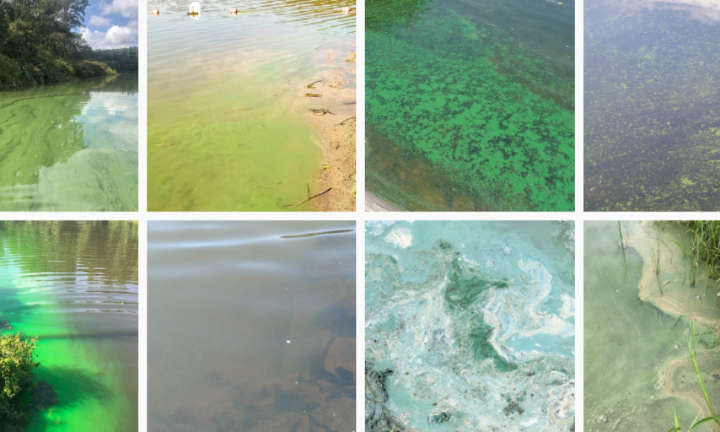Watch out for bad algae, and don’t feed it.
Blooming Grove. Climate change and flawed land use nourish Harmful Algal Blooms that can be toxic to people, pets and wildlife.

Harmful Algal Blooms are overgrowths of algae in the water, that can produce dangerous toxins on freshwater and marine environments, affecting plants and wildlife that live there, as well as humans. One result of climate change is that Harmful Algal Blooms can become more prolific and more intense.
What HABs need to be successful in an ecosystem are sunlight, slow-moving water and nutrients like nitrogen and phosphorus. These nutrients can come from human activities, such as agriculture, storm water, wastewater, and from individual properties. These nutrients are often in high levels as a result of human activity, encouraging blooms that are more severe and more frequent.
Climate change adds to these nutrients, supporting the growth and intensity of HABs. Harmful Algal Blooms typically bloom in the warm summer season, when sunlight is most available. Toxic blue-green algae prefers warm water. As climate change creates warmer weather conditions, it warms surface waters as well. Warmer water also leads to less water mixing in surface water, allowing algae to grow thicker and faster. As climate change continues to contribute to warmer weather and humans continue to add nutrients to surface waters, Harmful Algal Blooms will become more intense and more frequent in water bodies across the globe, and here in Northeast Pennsylvania.